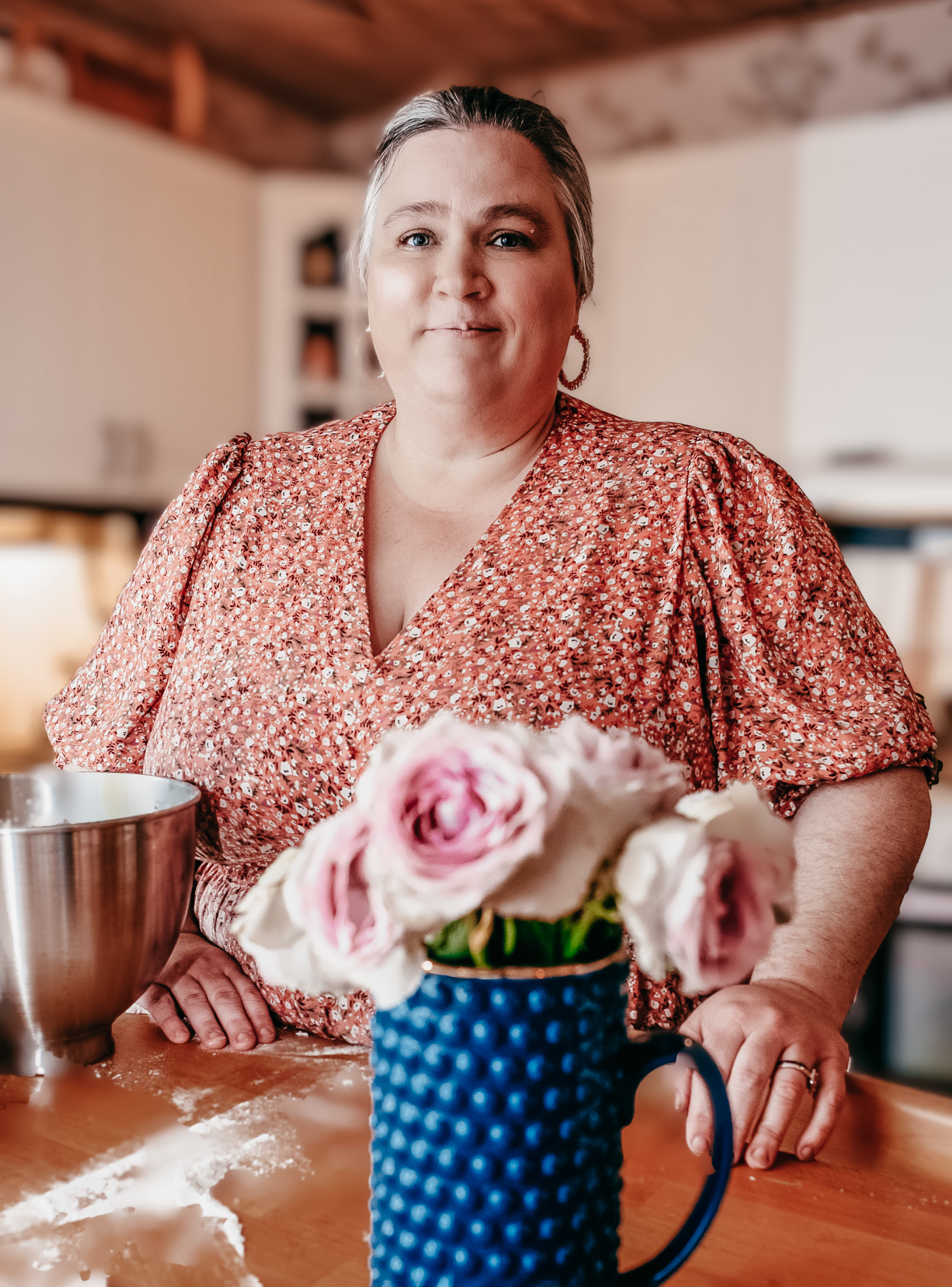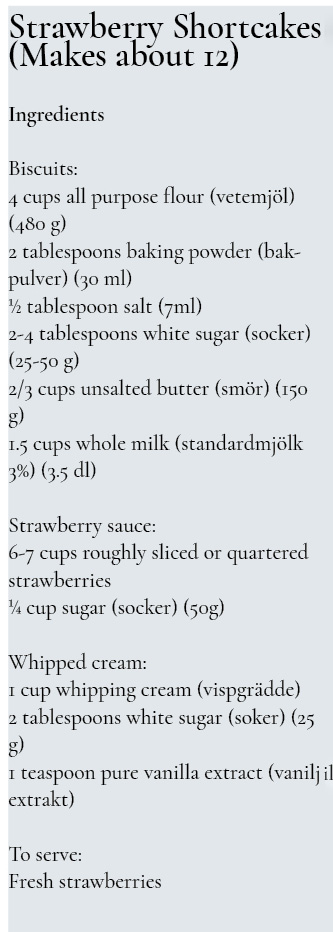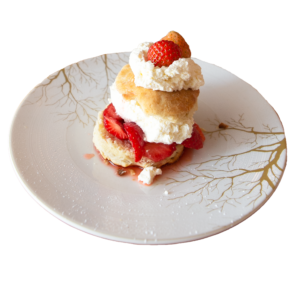For many newcomers to Skellefteå, one of the hardest challenges is coming to terms with new cuisine and finding the ingredients for our own country’’s dishes. In this regular new column, Jennifer Claywood aims to help all Norrland newbies find a taste of home. First up, the food of the American south. Photography by Donna Richmond.

When I was in eighth grade, I was fortunate enough to take a trip to Mexico with a few other students and our Spanish teacher. Late the night before we were to leave, I made my way out to the dark water and began swimming from shore. In the blackness, alone, far from the beach, I became caught in a powerful undertow. I tried several strategies to make my way back to shore becoming more and more tired as the minutes wore on.
Close to death
Eventually I was able to beat the current and made it back to the beach. As I touched sand, pulling myself from the water, a solitary tree released a coconut. I picked up the fruit and found my way into the deserted banquet hall of our hotel, lights warmly inviting me in. I stepped to the empty bar and was greeted by a hotel employee not long after. I explained to the man that I’d just nearly died (teenagers can be so dramatic) and that I was interested in borrowing a hammer so I could try and open up the coconut that had welcomed me back from death.
It was amazing!
He took the coconut from me and when he returned, he’d already opened it and shaved it into big chunks that I greedily tore into. It was the most amazing thing I’d ever eaten.You don’t need a near-death occurrence for the scent or taste of a food to magically transport you back to a past moment. Any food experience can do that. So it’s no wonder that being able to recreate our favorite recipes in a new country can make us feel at ease. At home.
I’ve lived in Sweden for four years now and I’ve often heard it said that in Skellefteå, people move here for work or love.
Culture shock
I like to joke that I moved here from Florida for the weather. (If this is the hundredth time you’ve heard that joke, I’m sorry.) Moving from Jacksonville, the most populated city in Florida, to Skellefteå and then Ursviken, was a big change. Even with such an extreme shift in climate, I didn’t expect to experience culture shock. I’d been to Sweden plenty of times, and almost everyone spoke English. In Sweden I could find restaurants and grocery stores and toilets. Cars and shops and ice cream. No big deal, right?
Where’s the turkey?
I didn’t realize that I’d be unable to find a turkey for my first Thanksgiving here. Or that I’d have to visit four grocery stores in order to find celery. Or that I’d go two years without tasting mint chocolate chip ice cream. It might seem inconsequential, this role that food takes in our lives, but when you are far from home it becomes clear how much you have taken it for granted. Food is a big part of our culture and our identities. Learning how to cook here was certainly a challenge and required a lot more effort than I had originally planned for. Where was the buttermilk? The brown sugar? Where were the graham crackers (a sweet flavored cracker made with graham flour that originated in the United States in the mid-19th century) for cheesecake? The good cream cheese?
It became apparent to me that a cookbook for expats living in Sweden was sorely needed. And so was born, ‘Cooking in English in Sweden’, an ongoing project in which I hope to bring a melting pot of food culture together in one place through a shared language.
They are good!
While I continue working on the cookbook, I will share a few recipes and stories with you here in Norrland Living. Being from the southern US, fried chicken, in its many forms, was a staple. Whether plain, spicy, barbecued, breaded, without breadcrumbs, boneless, saucy or dry, many restaurants and cooks made their name on these recipes. Find my recipe below. This is a mild recipe. You can make it more spicy by adding more cayenne or red pepper flakes at any point in its preparation. Whether you call them chicken fingers, strips, fillets or tenders, one thing we can all agree on is that they are good.
Biscuits are different
You may already be familiar with the almost daily clash between British and American English. One such conflict arises when talking about biscuits. My strawberry shortcake recipe found here includes homemade biscuits, but not British ones. If you are familiar with British baking, these are more like scones. Recipe notes: While this recipe includes sweet biscuits, you can eat them as is, as part of a savory meal, or even decrease the sugar content to 2 tablespoons instead of 4 if you find the recipe too sweet for your liking. It can also be difficult to find vanilla extract depending on where you live. If they don’t have the extract at your local store, feel free to use vanilla powder or vanilla sugar in the whipped cream instead. In the next instalment of ‘Cooking up a New Home,’ we will meet Nguyễn Vân who will teach us how to make Vietnamese fried spring rolls. If you would like to have a recipe or food-related expat story considered for Norrland Living or the upcoming cookbook ‘Cooking in English in Sweden’, feel free to contact [email protected].
Strawberry shortcakes
Directions:
Prepare the strawberries. Trim the green from the strawberries and cut into quarters. Add the ¼ cup of sugar, cover, and place in the refrigerator until ready to use.
Prepare the dough. Sift together flour, baking powder, sugar, and salt. Once the dry ingredients are mixed well, you’ll want to cut in very cold unsalted butter. There are a variety of ways to do this. You can dice the butter with a sharp knife and then rub it between your fingers into the dry ingredients, you can cut it in using two knives or a pastry cutter, or you can use a food processor. You want the butter to be distributed in small chunks throughout the flour mixture. After you have cut in the butter, put the mix into the fridge or freezer for 10-15 minutes. Preheat the oven to 220c. Once your butter is cold, add 1.5 cups of whole milk to the mix and fold everything together with a rubber spatula. You don’t want to overmix the dough, so it should not be completely mixed before you turn it out onto a floured surface. It will be very shaggy when you pour it out. Using floured hands, knead the dough on your work surface 10-15 times. Then you will want to pat out the dough into a large circle. Fold in the sides, one on top of the other, and turn. Then pat out, fold over the sides and turn again. This procedure will add nice layers to your finished product. Do this 2-3 more times and then pat out your dough into a final circle with a thickness of about ¾ inch. Cut out your dough with a 2.5-3 inch circle cutter. Do not twist the cutter after cutting into the dough. Just use one swift slice downward. If you do not have a circular cookie cutter, feel free to use a floured glass. Place the biscuits next to each other (sides touching) on an ungreased or VERY lightly greased baking pan. You can use parchment or silicone to ensure easy removal. Bake for 12-15 minutes until the edges take on a brown color.
Assemble the shortcakes. After your biscuits are done, split them in half and place on a plate. Cover the bottom piece with strawberry syrup and whipped cream then assemble the other half of the biscuit on top. Top this with more whipped cream, strawberry sauce, and fresh strawberries if so desired. Enjoy!
Fried chicken tenders
Directions:
Thaw your chicken overnight in the refrigerator if using frozen. If your chicken breasts are not already in long strips, slice your chicken breasts into tenders. Make the marinade and then split between two large zip-top freezer bags. Massage the marinade into the chicken strips and then place into the refrigerator. Marinade for at least 2 hours or up to 24 hours.
Remove the chicken strips from the marinade, discarding the marinade. Mix the dry breading ingredients into a large shallow container and the egg and water into another one Bread the chicken strips. Dip them in the egg mixture then the flour mixture and set aside. Let the chicken strips come to room temperature before frying. Heat your oil over medium to medium high heat. (About 175c) You want the pan to be deep to avoid burning yourself from splatters. Heat until the oil is shimmering but not smoking. You can test the oil by tossing in a little bit of breading. If it starts sizzling, it’s ready. You want the oil to go up the sides of the pan by about 2 cm.
While your oil is heating up, prepare a large sheet pan with paper towels for draining. Place each chicken tender into the oil. Fry until both sides are evenly brown, about 8-10 minutes for each side. Drain chicken tenders on the prepared paper towel.
In the next ‘Home from home cooking,’ we will meet Nguyễn Vân. If you would like to have a recipe considered for Norrland Living or the upcoming cookbook ‘Cooking in English in Sweden’, please contact Jennifer on [email protected].







